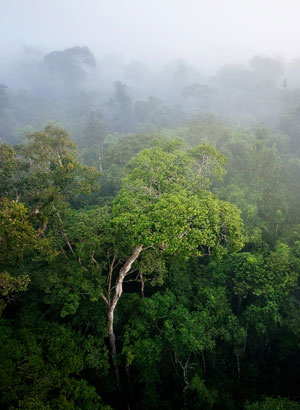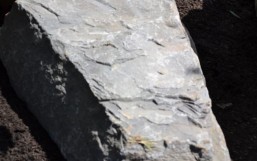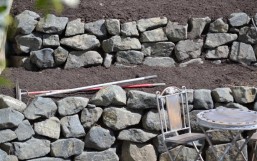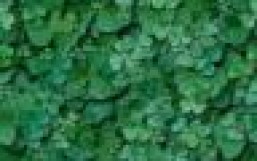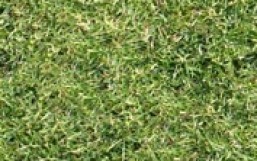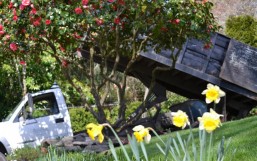A new study published in PLoS Biology, a scientific journal, estimates that there are 8.7 million different species on Earth, give or take 1.3 million. Previous estimates have ranged from 3 million to nearly 100 million. According to The Guardian (UK), this study finds that some three-quarters of all species are on land, and a majority of these are insects. Only one quarter reside in the oceans, even though 70 percent of the Earth’s surface is covered in water. As famed biologist E.O. Wilson explored in The Future of Life, estimating the number of species is incredibly difficult, largely because a huge share of species are still undocumented. Attempting to put a number on our collective ignorance of the world’s biodiversity, the report argues that some 86 percent of all plant and animal species and 91 percent of ocean species have not been “named and cataloged.” Climate change make things even worse: Scientists estimate mass extinctions of up to 10 percent of all species, meaning that many unknown species will die off before they are even identified.
Dr. Camilo Mora of the University of Hawaii and Dalhousie University in Halifax, Nova Scotia told The Guardian that counting all species accurately is important for setting a base line: ”Scientists have been working on this question of how many species for so many years. We know we are losing species because of human activity, but we can’t really appreciate the magnitude of species lost until we know what species are there.”
The researchers analyzed data on 1.2 million species, and used Carl Linnaeus’ taxonomical “tree-like” system to determine “patterns between […] hierarchical groupings which they could use to infer the existence of missing species that scientists have not yet described. That allowed them to use data from higher orders – such as anthropods, where there is a lot of data – to predict the number of creatures at the species level.” Their final estimate: 7.8 million species of animals; almost 300,000 different types of plants; more than 600,000 different species of fungi, mushrooms, and molds; some 36,000 species of single-celled organisms; and 27,000 species of algae. The authors didn’t delve into bacteria.
Robert Mays, a UK government advisor, said the findings were realistic: “It is sort of saying that the trunks and lower branches of the tree seem similar from group to group. At one end of the thing, you have birds and mammals that really are completely known. At the other end, you have just got a handful of branches and twigs. But if you do the big assumption the trees are similar, then it seems sensible.”
However, others are critical of the estimate, arguing that if the methodology was changed, an entirely new estimate could easily be calculated. For example, other approaches have tried to classify the Earth’s species based on patterns derived from the size of species or their location, or their relationships with other species. According to The New York Times, Robert May, an evolutionary biologist at the University of Oxford, argued in the late 1980s that the diversity of land animals grows as they shrink in size. “He reasoned that we probably have found most of the species of big animals, like mammals and birds, so he used their diversity to calculate the diversity of smaller animals. He ended up with an estimate 10 to 50 million species of land animals.”
Terry Erwin, a carabidologists or beetle expert, found more than 1,100 species of beetle from a single tree in the rainforest of Panama. He estimated more than 30 million species of insects in tropical rainforests alone. On the approach taken in the new study, Erwin told The Guardian: “These guys base these on classification of animals, and classification of animals are human constructs. The reason it is predictable is that humans are predictable, especially in the scientific field. What they are measuring really is human activity. It is not real activity out in the wild.” Also, a specialist focused on fungi, David Pollack at University of Colorado, agrees and argues that there are far more fungi out there, up to 5 million (not the 600,000 estimated in this paper’s approach). Lastly, microbiologists argue that the diversity of microbes will only dwarf animals. “A single spoonful of soil may contain 10,000 different species of bacteria, many of which are new to science.”
The Guardian writes that one problem is that identifying and cataloging new life forms is “expensive and slow,” with only 14 percent of life forms represented in databases. Scientists point to a lack of funding. ”At the current pace, it would take 300,000 specialists 1,200 years to go through the laborious process of describing the new discoveries in scientific journals, and then entering them in electronic databases.” The lack of funding may be due to a lack of interest in these efforts among the public given most of the species to be discovered will be very small, and concentrated in remote areas.
Still, scientists are making big finds almost every day. “Last week, scientists at the Smithsonian Institution reported the discovery of a primitive eel in a reef off the coast of the South Pacific island nation of Palau. The new species, Protoanguilla palau, bore little relation to 19 other forms of eel currently in existence and some of its characteristics – such as a second upper jaw – were more in line with fossils from 65m years ago.”
Read the article and the study.
Image credit: Cristalino State Park, Alta Floresta, Mato Grosso, Brazil / Daniel Beltra Conservation Photography


